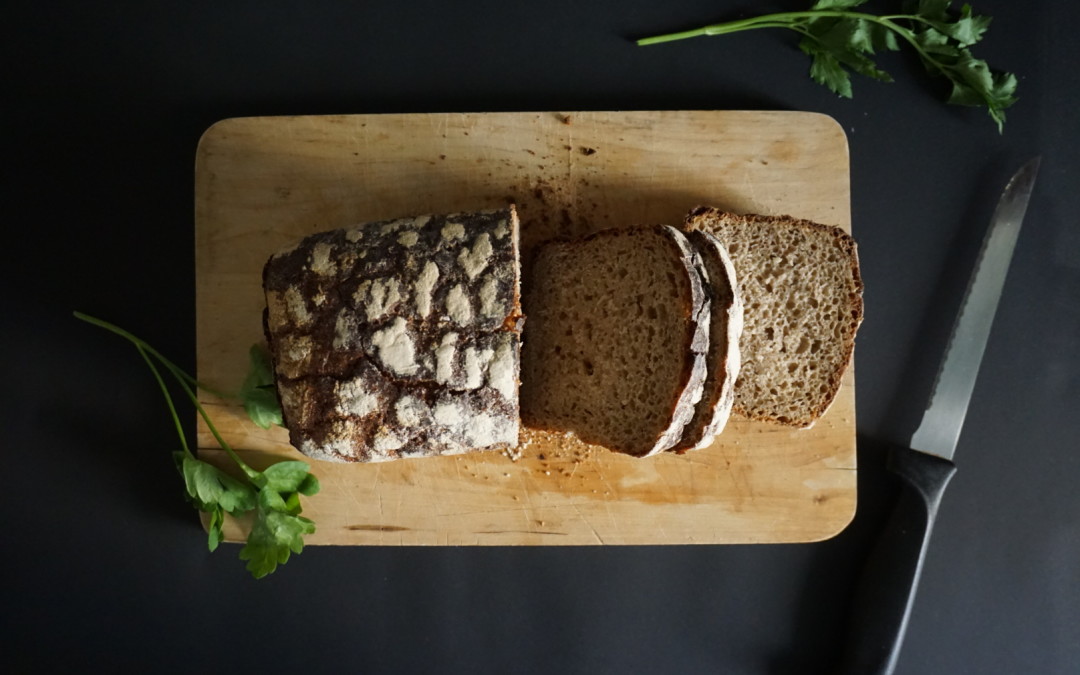There’s widespread belief that cutting out wheat is one of the best things you can do for your health. There’s a lot of information out there saying why bread is so bad, but there’s also counters those arguments, and it’s hard to know which is correct.
In doing my own digging for answers I found more sources saying that overall it’s not good for our health, although I also found people saying that the hype is a whole bunch of nothing, and we shouln’t be so quick to demonize a food that’s been a staple for generations.
Here are some of the problems with wheat:
1. Changes in Modern Wheat: This is a controvertial and complicated topic, but here’s the gist: Over the last several decades, wheat in this country has seen significant genetic manipulation because the major food corporations that manufacture wheat have come up with ways of creating and harvesting wheat that are more cost effective and effieient. An example of this is the variety of wheat designed to withstand high amounts of the herbicide Roundup. Roundup is used to kill weeds, but obviously they don’t want it to kill the wheat crop, so they genetically engineered wheat to be resistant to Roundup. No weeds and more wheat to harvest; it’s a win-win right? The problem is that glyphosate (the main ingredient in Roundup) is being linked to all sorts of health problems in the general public. Glyphosate can even be found in the bread that we eat and the water that we drink. However, people can’t seem to agree if glyphosate poses an immediate threat to our health and the environment.
- The WHO declared that glyphosate “probably causes cancer” and have found links to tumors and cancer in animal trials, and damage to human DNA cells after exposure to glyphosate, although there is limited evidence of a carcinogenic link in humans as of yet.
- The wheat industry and Monsanto say that evidence is too thin and that the groups that are finding links between glyphosate use and increased risk of cancer are “cherry picking” their information. They also say that many other everyday items have been deemed by the WHO to be cardinogenic such as cellphones, caffeine and alcohol, and people continue to use those.
I see the value in the arguements on both sides, so like always this should be the individual’s decision.
2. Modern American Diet: We just eat too much bread! We’re brought up thinking that grains and carbs are the biggest part of the food pyramid. Think about our eating habits at mealtimes. Breakfast has customarily centered around things like toast, cereal, bagels, and muffins. Then comes lunch which is usually a sandwich. A snack might consist of crackers, pretzels or chips. Then at dinner it’s traditional to have a basket of bread or rolls at the table, in addition to a rice or pasta that is probably part of your main dish. Since we’re used to things being this way it’s not something we readily question, and so continues the cycle. So, even if the wheat crop is pristine, it’s not doing anything for our health to eat as much of it as we do.
3. Nasty Ingredients: It should only take 4 ingredients to make bread: flour, yeast, water and salt. However, most commercially available grain products in grocery stores like cereals, crackers etc. contain long lists of ingredients such as preservatives, flavorings, chemical dough conditioners, artificial coloring, added sugars, and GMOs. And just becuase these products are deemed safe for consumption that doesn’t mean it’s something you want to be eating in large amounts on a regular basis.
4. Blood Sugar: Wheat, yes even the good “whole wheat” bread, can quickly raise your blood sugar. Whole wheat bread is just whole grains that have been ground up into a flour, so it still contains the nutrients of the whole grains but since it’s in a pulverized, overly processed form it gets absorbed into your blood stream very quickly, causing your blood sugar to spike, then drop, leading to hunger, more eating and weight gain. So don’t be fooled by the label on the bread packaging that sais “whole wheat” or “whole grain” becuase it will still turn into sugar in your body.
A better alternative
While I don’t recommend carb loading on “healthier bread,” I realize it’s hard for people to completely change the way they eat, so healthy swaps are a happy compromise. My personal favorite is sprouted grain. Sprouted grains are whole grains that are soaked in water until it grows a little sprout. During this sprouting process, enzymes are released which break down proteins and carbohydrates, helping make sprouted grain food low glycemic. Also, sprouts have more vitamins, minerals and antioxidants than whole grains and are more easily digested than starchy flour. Because it’s easier to digest, our bodies are more able to absorb the minerals, antioxidants, and vitamin C and vitamin B from the grains.
Check out this list from The Food Babe on commercial breads to avoid, and ones that are not as bad.
Bottom Line: While I’m not in favor of eliminating bread completely, I want to be an educated consumer and know the right kinds to eat and in the right amounts. It’s important to also know what your body can handle. Some people should not eat wheat, and others don’t have to cut it out completely. Everyone has to make their own decisions when it comes to their health, but we are given so much conflicting information it’s hard to sort out what food is going to do harm to your body.
- Know what is in the food you are eating
- Make clean food choices most of the time
- Make exceptions for certain occasions, …because: cake.

